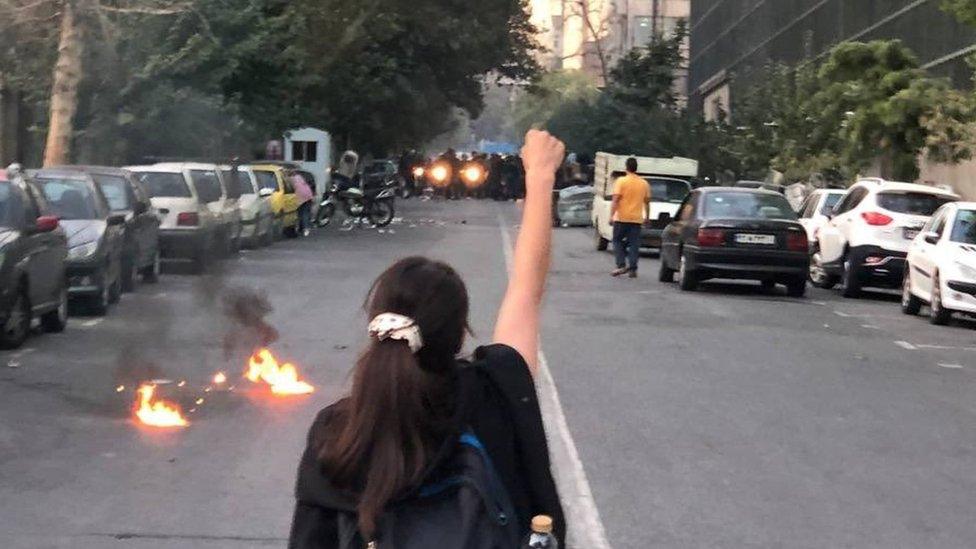Iran: A really simple guide to the protests
- Published

The protests sparked by the death in custody of a young woman spread to dozens of cities and towns
People have been protesting across Iran for the past year, defying a deadly crackdown by security forces.
The demonstrations have presented the most serious challenge to the Iranian authorities in decades.
What are the protests about?
It all started with the death on 16 September 2022 of Mahsa Amini, a 22-year-old woman. She had been arrested by morality police in Tehran three days earlier for allegedly violating Iran's strict rules requiring women to cover their hair with a hijab, or headscarf.
Iran's state coroner attributed her death to pre-existing medical conditions, but a UN human rights expert said the evidence established that she died "as a result of beatings" by morality police.
The first protests took place after Amini's funeral in the western city of Saqqez, when women ripped off their headscarves in solidarity.
The unrest rapidly spread across the country, with demands ranging from more freedoms to an overthrow of the state.
What role have women played?
Videos have shown them defiantly setting their headscarves on fire and cutting their hair in public to chants of "Woman, life, freedom" and "Death to the dictator" - a reference to the Supreme Leader, Ayatollah Ali Khamenei.
While some women have publicly protested against the hijab before, cases have been isolated and dealt with severely. There has been nothing compared to the current scale.
In an unprecedented show of support, schoolgirls have also demonstrated in playgrounds and on the streets.
Men and teenage boys have also participated in large numbers and backed the women's demands.
How have authorities reacted?
They have played down the protests and tried to suppress them with force.
Ayatollah Khamenei has accused the United States and Israel, Iran's arch-enemies, of orchestrating "riots" - dismissed by critics as fabricated.
How many people have been killed?
The BBC and other independent media are barred from reporting from inside Iran, making it difficult to verify what is claimed by state media. Social media, activists and human rights groups help provide a picture, although authorities have disrupted internet and phone services.
Authorities have not released an official death toll, but Iran's Human Rights Activists News Agency (HRANA) says at least 530 protesters have been killed by security forces. Almost 20,000 other protesters have reportedly been detained, including journalists, film stars and footballers.
Seven protesters have also been executed following what the UN expert called "arbitrary, summary and sham trials marred by torture allegations". Dozens more have reportedly been sentenced to death or charged with capital offences.
Security forces have denied killing peaceful demonstrators, but they have been filmed firing live ammunition on the streets.
Are the protests continuing?
A year after Mahsa Amini's death, the protests have largely subsided. But sporadic demonstrations still take place amid continuing discontent at the clerical establishment and, in particular, the hijab laws.
Many girls and women have stopped covering their hear in public in recent months, despite the return of the morality police to the streets and the installation of surveillance cameras to identify them.
Parliament is also reviewing without debate a draft law that would impose a series of severe punishments on those not obeying the dress code, including up to 10 years in prison.